Tigray is the northernmost regional state in Ethiopia, serving as the homeland for the Tigrayan, Irob, and Kunama people. Mekelle is its capital and largest city. Tigray ranks as the fifth-largest by area, fourth-most populous, and fifth-most densely populated among Ethiopia's 11 regional states. It shares borders with Eritrea to the north, the Amhara Region to the south, the Afar Region to the east, and Sudan to the west.
1943: Woyane rebellion
In 1943, a rebellion emerged across southern and eastern Tigray with the slogan "there is no government; let's organize and govern ourselves". Local assemblies were formed, and a central congress was established.
February 1974: Ethiopian Revolution Outbreak
In February 1974, the Ethiopian Revolution started. The first signal of mass uprising was the actions of the soldiers of the 4th Brigade of the 4th Army Division in Nagelle in southern Ethiopia.
June 1974: Announcement of the Derg
On June 28, 1974, the Coordinating Committee of the Armed Forces, Police, and Territorial Army, known as the Derg, was officially announced by a group of military officers.
July 1974: Derg Obtains Key Concessions
In July 1974, the Derg obtained key concessions from Emperor Haile Selassie, including the power to arrest military officers and government officials.
August 1974: Dismantling Imperial Government
In August 1974, after a proposed constitution creating a constitutional monarchy, the Derg started dismantling the imperial government.
September 1974: Deposition of the Emperor
On September 12, 1974, the Derg deposed and imprisoned Emperor Haile Selassie.
1975: Nationalization of industries
In 1975, the Derg nationalized most industries and private urban real-estate holdings.
October 1978: National Revolutionary Development Campaign
In October 1978, the Derg announced the National Revolutionary Development Campaign to transform the economy.
1984: Ten-Year Plan Launch
In 1984, the Derg launched a Ten-Year Plan (1984/85–1993/94) to expand agricultural and industrial output.
1989: Founding of EPRDF
Since its founding in 1989, the EPRDF—which included the TPLF as dominant member—held control over Ethiopia’s ethnic‑federal system.
January 1991: EPRDF Captures Gondar, Bahar Dar, and Dessie
Toward the end of January 1991, the Ethiopian People's Revolutionary Democratic Front (EPRDF) captured Gondar, Bahar Dar, and Dessie.
1991: End of Civil War
After the end of the 1991 civil war, an important aspect of agricultural work in Tigray was to minimize the problems of drought by reforesting the region to improve rainfall and reduce soil erosion.
1991: Gebru Asrat becomes president
From 1991 to 2001, Gebru Asrat was the president of Tigray.
1993: End of Ten-Year Plan
The Ten-Year Plan, launched in 1984, concluded in 1993, showing a decline of 0.8% in per capita income over the period.
1994: 1994 Census
In the 1994 census, the Tigray region's population was 3,136,267, with 1,542,165 men and 1,594,102 women. Urban inhabitants numbered 621,210, representing 14% of the population.
1998: Eritrea-Ethiopia War
In 1998, war broke out between Eritrea and Ethiopia over territory administered as part of Tigray.
2000: Semitic-speaking presence in Tigray
Around 2000 BC, there is evidence of a Semitic-speaking presence in Tigray, Eritrea and northern Ethiopia. It is now believed that Sabaean influence was minor, limited to a few localities and disappearing after a few decades or a century.
April 2001: Tsegay Berhe becomes president
Between April 2001 and December 2010, Tsegay Berhe of the Tigray People’s Liberation Front (TPLF) served as President of the Tigray Region.
2001: End of Gebru Asrat's presidency
From 1991 to 2001, Gebru Asrat was the president of Tigray.
2002: United Nations Border Decision
In 2002, the United Nations awarded much of the disputed land to Eritrea.
2004: Access to Safe Drinking Water
According to the CSA, as of 2004, 54.0% of Tigray's population had access to safe drinking water; 42.7% of which were rural inhabitants and 97.3% of which were urban.
2005: Standard of Living Indicators
As of 2005, 31.6% of Tigray's inhabitants fell into the lowest wealth quintile; adult literacy for men was 67.5% and for women 33.7%; and the infant mortality rate was 67 infant deaths per 1,000 live births.
2005: Livestock Statistics
In 2005, it was estimated that farmers in Tigray had 2,713,750 cattle, 72,640 sheep, 208,970 goats, 1,200 horses, 9,190 mules, 386,600 asses, 32,650 camels, 3,180,240 poultry, and 20,480 beehives.
2005: National parliamentary elections
In 2005, the national parliamentary elections marked a turning point; serious opposition gains were met with strong government crackdowns.
2006: National Statistics Report
A 2006 national statistics report stated the land area of Tigray as 50,079 km (19,336 sq mi).
2007: 2007 Census
Based on the 2007 census, the Tigray Region had a population of 4,316,988, with 2,126,465 men and 2,190,523 women. Urban inhabitants numbered 844,040, representing 19.6% of the population. The region had an estimated density of 51 people per km.
2009: Regional GDP Contribution
In 2009, approximately 80% of Tigray's population were farmers, contributing 46% to the regional gross domestic product.
December 2010: Abay Weldu succeeds Tsegay Berhe
In December 2010, Abay Weldu succeeded Tsegay Berhe as President of the Tigray Region.
2011: National Statistics Area
The 2011 National Statistics gave an area of Tigray as 41,410 km (15,990 sq mi), but the sum of the figures it gave for the Tigray zones was substantially different, rendering the 2011 report internally inconsistent.
September 2012: Abay Weldu leads TPLF
From September 2012 to November 2017, Abay Weldu led the TPLF, concurrently serving as regional president.
2016: Protests Erupt
In 2016, protests erupted demanding reforms and challenging the longstanding one‑party dominance.
November 2017: End of Abay Weldu's leadership
From September 2012 to November 2017, Abay Weldu led the TPLF, concurrently serving as regional president.
2017: Continued Protests
In 2017, protests continued demanding reforms and challenging the longstanding one‑party dominance.
January 2018: Abay Weldu regional president tenure ends
Abay Weldu served as regional president from 2010 until January 2018.
2018: Village Discussions and Boundary Changes
In 2018 and 2019, after multiple village discussions, 21 independent urban administrations were added and other boundaries re-drawn.
2018: Woreda Reorganisation
In 2018 and 2019, woredas were reorganised as part of a reform to deepen decentralisation.
2018: Mekelle 70 Enderta F.C.
In 2018, Mekelle 70 Enderta F.C. was a member of the Ethiopian Football Federation and played in the Ethiopian Premier League.
2018: Border Agreement
In 2018, a bilateral agreement ended the border conflict between Eritrea and Ethiopia, with Ethiopia accepting the 2002 UN ruling.
2019: Woreda boundaries re-drawn
In 2018 and 2019, after multiple village discussions that were often vigorous in the more remote areas, 21 independent urban administrations were added and other boundaries re-drawn
2019: Village Discussions and Boundary Changes
In 2018 and 2019, after multiple village discussions, 21 independent urban administrations were added and other boundaries re-drawn.
2019: Ethiopian Premier League Title
In 2019, Mekelle 70 Enderta F.C. won its first Ethiopian Premier League title.
January 2020: Increase from 35 to 94 Woredas
In January 2020 the re-drawing of boundaries and addition of urban administrations resulted in an increase from 35 to 94 woredas.
January 2020: Increase in Woredas
In January 2020, the number of woredas increased from 35 to 88 after the addition of 21 independent urban administrations and the redrawing of other boundaries.
January 2020: Woredas of Tigray
Up to January 2020, Tigray was subdivided into administrative zones, and further into woredas or districts.
November 2020: Start of the Tigray War
In November 2020, a conflict erupted between the Tigray People's Liberation Front (TPLF) and the Ethiopian federal government, supported by Eritrea, escalating into the Tigray War and destabilizing the region.
2020: Military Counterattacks
Following the 2020 Tigray regional election, on November 4, after the attacks by TDF, the Ethiopian and Eritrean militaries launched counterattacks.
2020: Tigray Clubs in Ethiopian Premier League
In 2020, Mekele City, Suhul Shire, and Adigrat University football clubs were Tigray-based clubs participating in the Ethiopian Premier League.
2020: Postponement of Ethiopian National Election
In 2020, Tigray withdrew its representatives from the Federal Democratic Republic of Ethiopia House of Peoples' Representatives due to the postponement of the national election.
January 2021: Emergency Food Situation
By January 2021, warfare, the COVID-19 pandemic in Ethiopia, and a locust outbreak contributed to an emergency food situation in the Tigray region, with approximately two million people facing food shortages.
2021: Replacement of Tigray Clubs
In 2021, Mekele City, Suhul Shire and Adigrat University football clubs, participating in the Ethiopian Premier League, were replaced due to the war.
November 2022: Peace Agreement
In November 2022, a peace agreement led to the formation of an interim administration in the Tigray region.
2023: Interim Regional Administration
As of 2023, the Tigray region is governed by the Interim Regional Administration of Tigray.
2023: Getachew Reda Kahsay Appointment
In 2023, Getachew Reda Kahsay, a TPLF member, was appointed as the Chief Administrator of the Interim Regional Administration of Tigray.
2025: Political Instability
In 2025, tensions resurfaced as Tigray’s interim president fled to Addis Ababa after a faction seized control, sparking fears of renewed conflict.
Mentioned in this timeline

Football encompasses a variety of team sports centered on kicking...
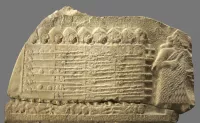
War is defined as an armed conflict involving the organized...

A constitution serves as the foundational legal document for any...
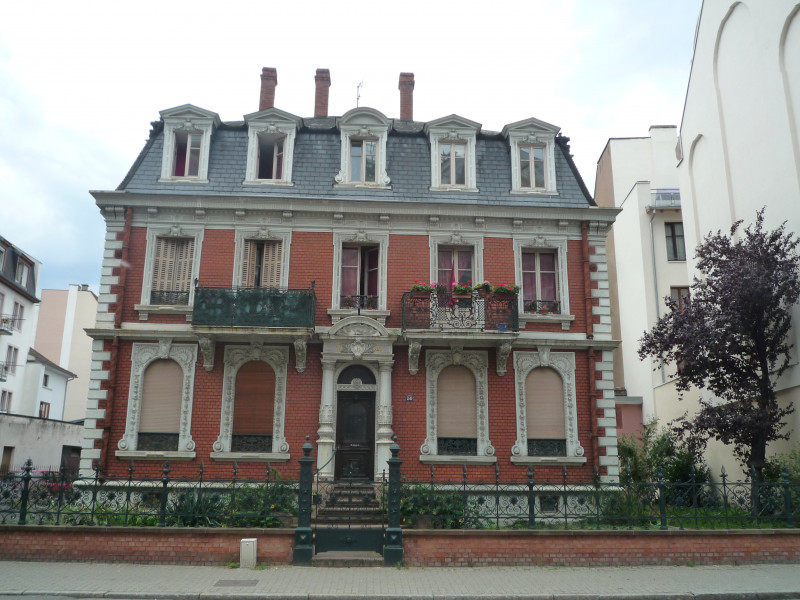
A house is a residential building ranging from simple huts...
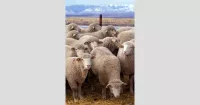
Domestic sheep are quadrupedal ruminant mammals typically kept as livestock...
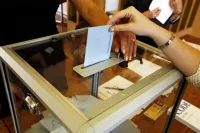
An election is a structured decision-making process where a population...
Trending

13 minutes ago Nate Bargatze Plans Nashville Theme Park; Team Negotiates Site Locations
13 minutes ago DAZN broadcasts World Sevens Football tournament debut, TNT enhances US distribution.

14 minutes ago Claressa Shields and Che Kenneally Eye Early 2026 Boxing Match
14 minutes ago Raleigh: Showers Expected, Clearing for Mild Weather Before Thanksgiving in North Carolina

14 minutes ago Dolly Parton Addresses Health Issues, Misses Award Ceremony and Dollywood Hall of Fame Induction.
14 minutes ago Indian HAL Tejas Fighter Jet Crashes at Dubai Air Show; Pilot Killed.
Popular

XXXTentacion born Jahseh Dwayne Ricardo Onfroy was a controversial yet...

William Franklin Graham III commonly known as Franklin Graham is...

Cristiano Ronaldo often nicknamed CR is a Portuguese professional footballer...

Candace Owens is an American conservative political commentator and author...
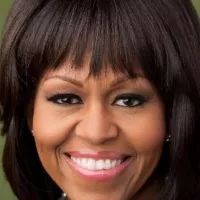
Michelle Obama is an American attorney author and former First...
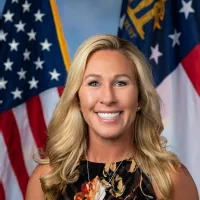
Marjorie Taylor Greene known as MTG is a far-right American...